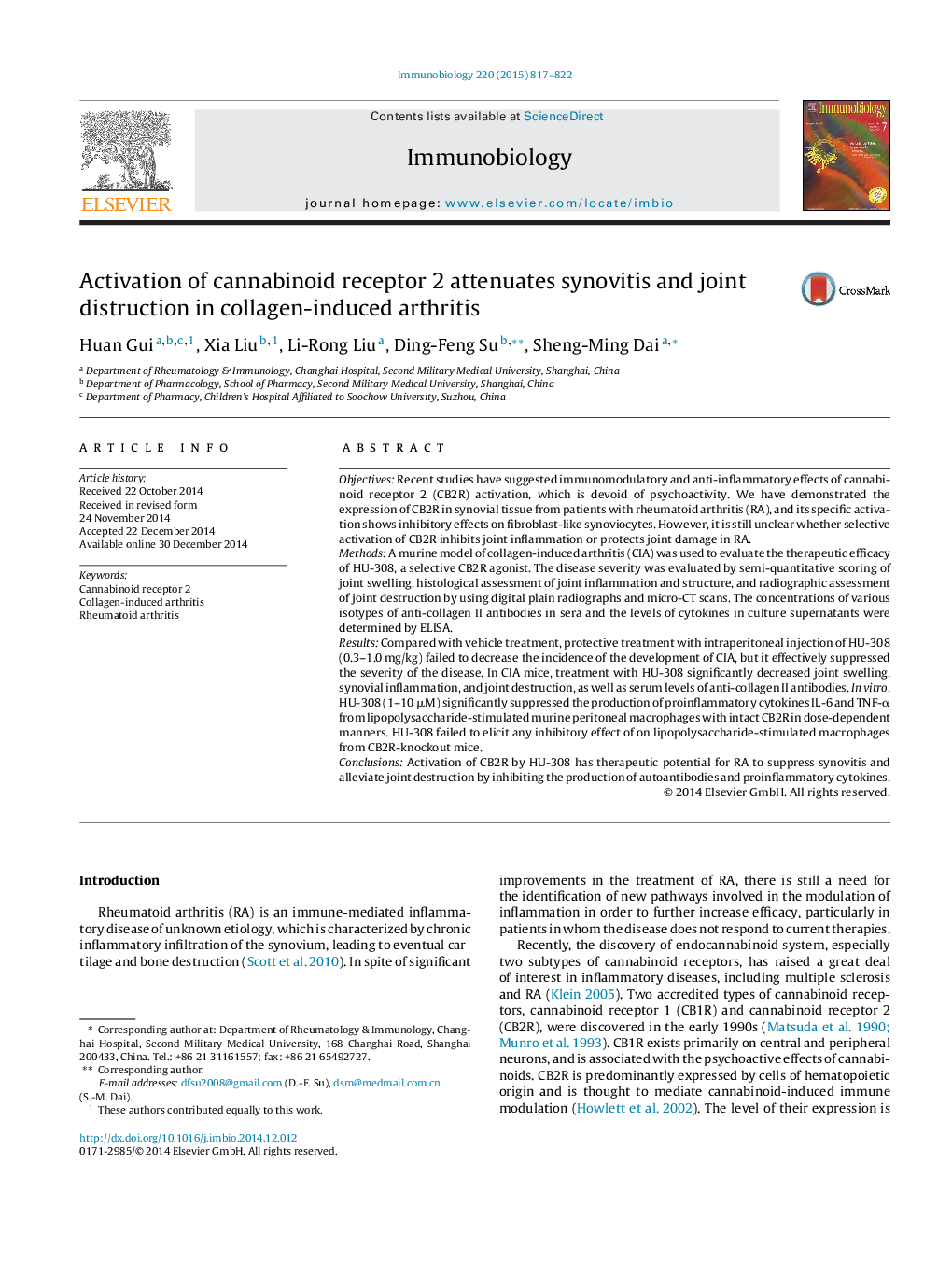| Article ID | Journal | Published Year | Pages | File Type |
|---|---|---|---|---|
| 2182919 | Immunobiology | 2015 | 6 Pages |
ObjectivesRecent studies have suggested immunomodulatory and anti-inflammatory effects of cannabinoid receptor 2 (CB2R) activation, which is devoid of psychoactivity. We have demonstrated the expression of CB2R in synovial tissue from patients with rheumatoid arthritis (RA), and its specific activation shows inhibitory effects on fibroblast-like synoviocytes. However, it is still unclear whether selective activation of CB2R inhibits joint inflammation or protects joint damage in RA.MethodsA murine model of collagen-induced arthritis (CIA) was used to evaluate the therapeutic efficacy of HU-308, a selective CB2R agonist. The disease severity was evaluated by semi-quantitative scoring of joint swelling, histological assessment of joint inflammation and structure, and radiographic assessment of joint destruction by using digital plain radiographs and micro-CT scans. The concentrations of various isotypes of anti-collagen II antibodies in sera and the levels of cytokines in culture supernatants were determined by ELISA.ResultsCompared with vehicle treatment, protective treatment with intraperitoneal injection of HU-308 (0.3–1.0 mg/kg) failed to decrease the incidence of the development of CIA, but it effectively suppressed the severity of the disease. In CIA mice, treatment with HU-308 significantly decreased joint swelling, synovial inflammation, and joint destruction, as well as serum levels of anti-collagen II antibodies. In vitro, HU-308 (1–10 μM) significantly suppressed the production of proinflammatory cytokines IL-6 and TNF-α from lipopolysaccharide-stimulated murine peritoneal macrophages with intact CB2R in dose-dependent manners. HU-308 failed to elicit any inhibitory effect of on lipopolysaccharide-stimulated macrophages from CB2R-knockout mice.ConclusionsActivation of CB2R by HU-308 has therapeutic potential for RA to suppress synovitis and alleviate joint destruction by inhibiting the production of autoantibodies and proinflammatory cytokines.
